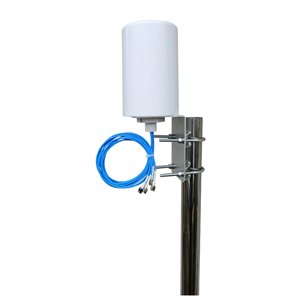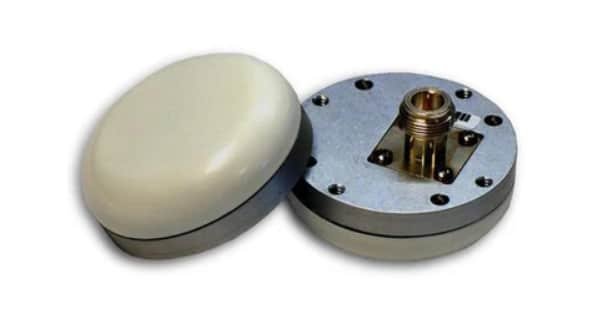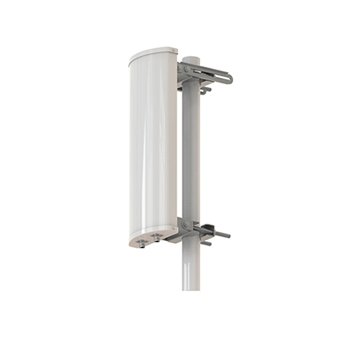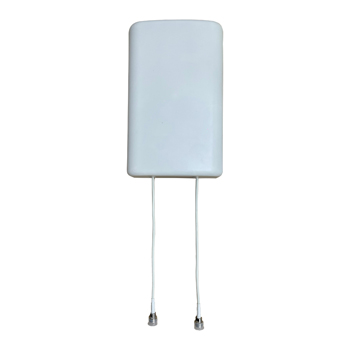
With the continuous development of WIFI 6 and WIFI 6E technology, WiFi 6 & 6E antenna has gradually become an indispensable part of this technology. Wi-Fi has become the most popular method to create computer networks since it became widely available in 1997. First, it started as a standard way across the industry as 802.11, before being renamed Wi-Fi. Consumers, businesses, and commercial organizations across the world use Wi-Fi to connect lots of different devices. Wi-Fi technology has been consistently developed and improved to make it even better, Wi-Fi 6 and Wi-Fi 6E are two of the recent additions. Wi-Fi 6, Wi-Fi 6E are having features that distinctly boost the quality and performance in a high-density network, and are used in applications like streaming high-definition videos, online gaming etc. So, Wi-Fi 6 and Wi-Fi 6E plays a key role in enhancing the internet connectivity.
In this article, we’ll go through the exciting world of Wi-Fi 6 and Wi-Fi 6E antennas. We’ll examine the features, and benefits, of both antennas and their impact on various industries.
Table of Contents
ToggleWhat is Wi-Fi 6 and Wi-Fi 6E
First, let’s clarify what Wi-Fi 6 and Wi-Fi 6E are. Essentially, they’re the latest Wi-Fi technology, designed to provide faster speeds, greater bandwidth, and higher efficiency.
Wi-Fi 6 also known as IEEE 802.11ax, released in late 2019 is designed operate 2.4GHz, and 5GHz frequency bands. WiFi 6E is an extension of WiFi 6, expanding into the 6GHz band. This addition significantly reduces congestion by providing more channels, ensuring a smoother and more reliable internet experience, especially in environments with many connected devices.
Each new version of the Wi-Fi standard has accelerated the way of growth in performance, range, or finding better ways to share the spectrum and support all devices in the network. Wi-Fi 6 is the next-generation Wi-Fi, which replaces Wi-Fi 5 (802.11ac). New technologies such as Orthogonal Frequency Division Multiple Access (OFDMA), Target Wake Time (TWT), and Multi-User Multiple Input Multiple Output (MU-MIMO) are introduced in Wi-Fi 6, enabling its new capabilities. Therefore, this will allow for a large area coverage in busy environments. We can use more devices on one network, meaning there are more messages successfully sent over an area.
The introduction of the 6 GHz band represents one of the most important changes in Wi-Fi technology over the last two decades, offering more bandwidth to support new applications and services.
Frequency range for Wi-Fi 6 and Wi-Fi 6e antenna
Like previous generations of Wi-Fi, Wi-Fi 6 antenna operates in unlicensed frequency bands. Primarily, Wi-Fi 6 will operate in the 2.4 GHz and 5 GHz bands. The 2.4 GHz band has wider coverage, since the wavelength is longer, it can also easily be interfered with by other devices, such as microwaves and Bluetooth. At the same time, the 5 GHz band has a shorter wavelength, which results in higher speeds and less interference but at slightly reduced coverage. Particularly, Wi-Fi 6 divides the combined bandwidth at 2.4 and 5 GHz into as many as 256 subchannels with the aim of reducing interference and frequency-selective fading.
Wi-Fi 6E antenna is built on top of that with the addition of the 6 GHz band, increasing the amount of frequency bandwidth available to Wi-Fi. The 6 GHz spectrum uses 1200 MHz of additional bandwidth, accommodating more than twice the number of channels available in the 5 GHz band. This helps to ease congestion and gives more space for high-bandwidth applications, therefore supporting the development of next-generation wireless experiences.
The Features of Wi-Fi 6E Antennas
Wi-Fi 6E antennas are specially designed to take advantage of this expanded frequency range, offering several key benefits mentioned below.
Extended Frequency Range
As mentioned earlier, Wi-Fi 6E antennas operate in the 6 GHz band, allowing access to more channels, thus reducing congestion and providing better means for data transmission. The larger range is essential in high-density environments where several devices operate and compete for bandwidth. This gives the benefit of faster speeds and improved overall performance.
Increased Bandwidth
Wi-Fi 6E antennas support up to 160 MHz channel widths for even faster data transfer rates. Wider channels enable the transmission of more data at one time, which serves to improve performance in high-bandwidth applications like video streaming, virtual reality, and cloud computing.
Advanced Beamforming
These antennas use Beamforming technology to make signals reach your devices more efficiently. That means greater signal strength, greater coverage, and hence a more reliable connection even to the devices at the edge of the network’s coverage area.
Enhanced Multi-User MIMO (MU-MIMO)
This feature includes 8×8 or 12×12 MIMO, which uses multiple antennas to transmit and receive data simultaneously. This leads Wi-Fi 6E antennas to support simultaneous users with even better efficiency, meaning lower latency and higher network capacity. Also, it allows several devices to connect and work seamlessly without slowing each other down.
High-Density Performance
Wi-Fi 6E antennas are specially designed for high-density device environments which include a lot of devices. So, these antennas can be used in a crowded office, busy airport or a stadium, which will help keep everyone connected, ensuring a reliable connection.
Lower Latency
This is a huge improvement over operations in the 5GHz band, where latency is typically around a few to 100 milliseconds. For real-time applications like online gaming and video calls, low latency is crucial. Wi-Fi 6E antennas are optimized to reduce delays in data transmission, thus providing a great experience for the users.
Energy Efficiency
Another advantage of Wi-Fi 6E antennas is their focus on energy efficiency. They’re designed to use less power, which improves battery life for connected devices and promotes environmentally friendly operations. This is particularly beneficial for mobile devices and Internet of Things (IoT) applications where power consumption is a key concern.
Applications Across of Wi-Fi 6 and 6E antenna
Most of the Wi-Fi application can gain something from these improved features in Wi-Fi 6 and 6E, and we’ll be examining how embedded and industrial applications can use these for better performance. Below mentioned are some applications which extend to various improvements, transforming the connectivity of people in a greater extent.
Smart Homes
Wi-Fi 6, 6E antennas can handle the increasing number of connected devices, starting from smart appliances and security systems all the way up to streaming devices and gaming consoles in today’s smart homes. These antennas allow the necessary bandwidth limits and lower latency to support the operating system.
Enterprise Networks
Companies can build high-performance networking with Wi-Fi 6, 6E antennas to support high demanding applications and a great number of users for enhanced productivity. This supports reliable video conferencing, and efficient cloud-based tools.
Educational Institutions
From online learning platforms to virtual reality labs, educational institutions are evolving using this technology. These kinds of technical capabilities in the learning environment are enabled by the bandwidth and capacity provided by the Wi-Fi 6, 6E antennas.
Healthcare Facilities
In the healthcare sector, reliable connectivity is crucial. Wi-Fi 6, 6E offers a channel for transmission of patient data, enabling telehealth services in an easy manner and facilitating connected medical devices. They ensure reliable connection without interfering and make better patient care.
Augmented/Virtual Reality (AR/VR)
AR/VR applications require high bandwidth and low latency to experience the realistic feeling. Wi-Fi 6E antennas deliver great results by making AR/VR applications much more realistic and interactive.
Public Wi-Fi Hotspots
These antennas will provide faster speeds and more reliable connections in places such as airports, cafes, and shopping malls when using a public Wi-Fi hotspot, since they allow high-density performance.
Industrial Applications
From automated factories to smart warehouses, Wi-Fi 6, 6E antennas are playing a vital role in the Industrial Internet of Things (IIoT). It allows machines and sensors to communicate flawlessly with each other, which is thus upgrading their efficiency and productivity.
Types of Wi-Fi 6E Antennas
To cater to different needs and environments, there’s a variety of Wi-Fi 6E antenna types available. Let’s discuss them one by one in detail,
Omnidirectional Antennas
These antennas radiate their signals in all directions and offer wide coverage. They are ideal for environments where devices are located in various directions from the antenna.
Directional Antennas
Directional antennas focus their signal energy in a given direction, offering much greater range and strength in that direction. They are perfect in scenarios that involve covering long-distance spaces or targeting specific areas.
Panel Antennas
Panel antennas are flat, rectangular antennas, operating with directional coverage. They often find application indoors for area-specific coverage, such as to cover an area like a conference or office space. Used primarily in high-density areas where precise coverage is required.
Sector Antennas
Sector antennas provide coverage over a certain angular sector, usually 60 or 120 degrees. They’re often used in outdoor environment applications, such as sports stadiums or parks.
Blade Antennas
The blade antennas are thin flat antennas and are normally deployed in high-density environments. These can be mounted on walls and ceilings and provide directional coverage.
Ceiling Mount Antennas
Given by the name, these are the antennas designed to be mounted onto ceilings to cater coverage to any area falling below them. They are also used in offices, hotels, and other indoor services.
Whip Antennas
A whip antenna is designed straight and omnidirectional, normally used where short distances are involved. This may be seen on most of the wireless routers and many other devices.
MIMO Technology in Wi-Fi 6E Antennas
MIMO (Multiple-Input Multiple-Output) technology is a key feature of Wi-Fi 6E antennas, further enhancing their performance. It allows antennas to support multiple simultaneous data streams, increasing data transfer rates and overall network capacity significantly. Think of it like having multiple lanes on a highway, allowing more cars to travel simultaneously.
If a certain application has limited bandwidth resources and has a high demand for data rate, a simple solution like MIMO can satisfy the requirements. This has shown the ability to enhance data rates, communication quality, and bandwidth while keeping power consumption constant. This is a great option for crowded environments.
Compatibility and Interoperability
In this regard, the compatibility of Wi-Fi 6, 6E antennas with existing devices and infrastructure is crucial for a transition to the new standard technology. Devices with Wi-Fi 6E are supposed to use the 6 GHz band, however, their backward compatibility with Wi-Fi 6 and earlier standards enables the older devices to connect with the network using 2.4 GHz and 5 GHz frequency bands. This interoperability allows an upgrade to Wi-Fi 6 or 6E without requiring immediate replacement of all the networking equipment.
Future Outlook for Wi-Fi 6E Technology
Introducing Wi-Fi 6E technology is a significant milestone in this era. While our dependence on internet connectivity increases, so does the need for speed, capacity, and the reliability of connectivity. Wi-Fi 6E is the newest generation of wireless technology designed to change how we interact with the digital world. Wi-Fi 6E operates within the 6 GHz frequency band, to meet the increased requirements. Wi-Fi 6E is much more than just an incremental upgrade, it is one of those revolutionary changes that really change how we connect, talk, and interact with our devices and the world.
Summary
Wi-Fi 6 and Wi-Fi 6E antennas can be considered as a significant upgrade in wireless technology, where it provides higher speeds, lower latency, and higher capacity than before, while connecting a large number of devices. Wi-Fi 6E brings the 6 GHz band and all along with the mentioned benefits. Thus, it introduces more channels, low congestion of data flow, improved performance, especially in crowded areas. Advanced features integrated into Wi-Fi 6E, such as beamforming and MU-MIMO, go even a step further in making sure connections are strong and reliable, even under high-density networks. These antennas are designed to perform well in various environments, from smart homes and offices to public spaces and industrial settings.
We have discussed the history of the evolution of Wi-Fi 6 and 6E, the new features introduced by Wi-Fi 6 and 6E, frequency ranges, features, applications, and much more. Wi-Fi technologies will continue driving its benefits, which improve innovations in wireless applications leading to an even more connected future.








